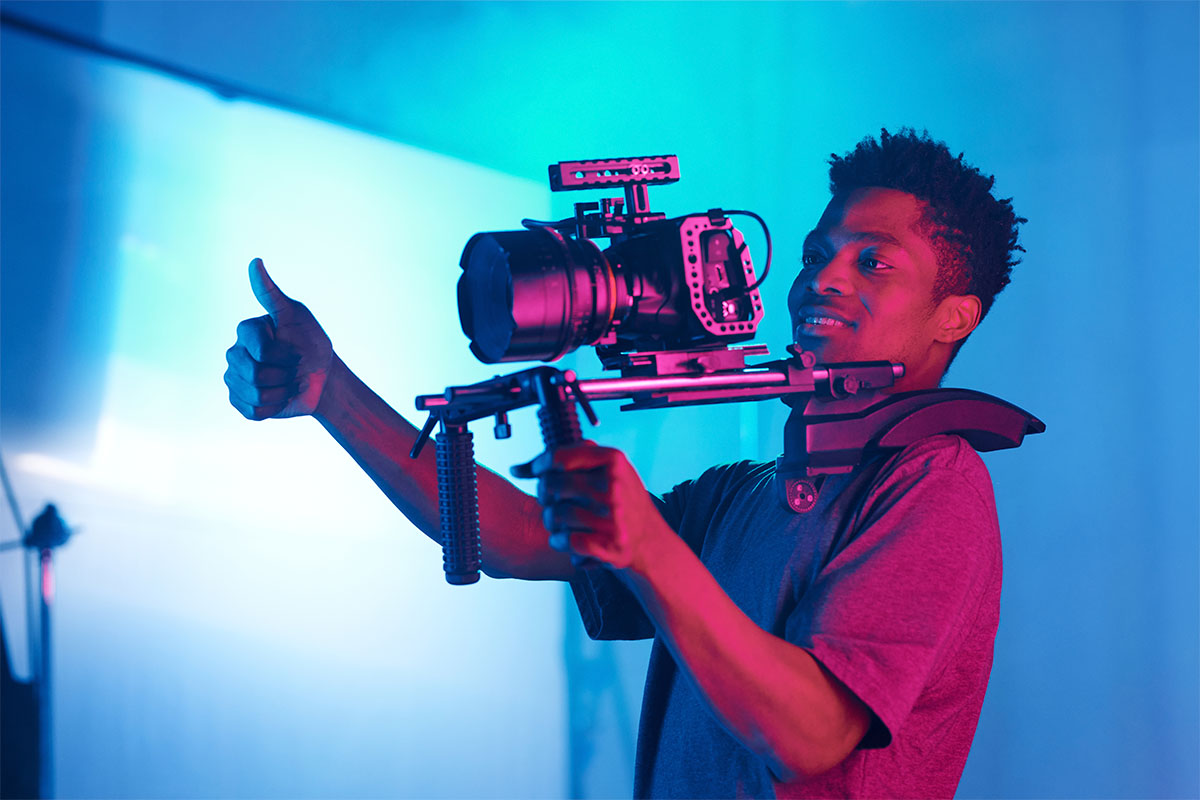
Video Production Firm: Key Terminology
Video production requires precision, coordination, and a specific language that drives the entire process. Whether you are planning a corporate video, a promotional piece, or even a short film, understanding the terminology behind each step can make the difference between a good video and a great one. Terms like shot list, frame rate, and main light are more than just words—they shape the look, sound, and flow of the final product. Understanding how these terms fit into the production process is important, not only for professionals but also for anyone interested in learning what happens behind the scenes. Colour grading sets the mood, while foley fills in the smallest audio details—each term plays a specific role in creating a video that remains relevant and effective long after the final edit. This article will take you through video production terms that everyone involved in creating or commissioning videos should know. We will break down their significance in the production workflow and explain how a video production firm applies this knowledge to deliver content that works. Whether you are involved in your first project or simply curious about what makes a professional video stand out, understanding these terms will give you insight into how everything comes together.
Pre-Production: The Planning Phase
The pre-production phase is where the foundation of the video is laid. During this stage, most of the terminology you will encounter relates to planning, organisation, and content creation. Here are some of the important terms.
Scriptwriting
A script sets the stage for your video. It includes everything from dialogue and voice overs to action and scene direction. Scriptwriting is crucial because it defines the structure and flow of the story.
- Role: The script ensures all team members are aligned with the project’s focus, providing direction for actors, crew, and editors.
- How a Video Production Firm Helps: A professional team works with you to write a script that supports your project’s intended outcome, rather than using a one-size-fits-all approach.
Storyboarding
Storyboarding takes the script and visualises it. It is a scene-by-scene breakdown of how each shot will appear on screen.
- Role: Provides a visual guide for how the final product will look, ensuring everyone on the team understands the creative direction.
- How a Video Production Firm Helps: Production firms often have in-house artists or use digital tools to create storyboards, helping clients visualise the final product before filming begins.
Shot List
A shot list is a detailed inventory of all the shots that will be needed for the video, listed in the order they should be filmed. This is important for organising the filming process, making sure all necessary shots are filmed. Unlike a storyboard, which visually represents each shot, a shot list focuses purely on the sequence and technical details of the shots
- Role: It streamlines the production process and ensures the final video reflects the planned sequence of shots.
- How a Video Production Firm Helps: Video production firms work with you to create this list, optimising the filming schedule and minimising time and resource wastage.
Location Scouting (Recce)
This term refers to the process of visiting potential filming locations to assess their suitability for the project. Location scouting is critical for understanding environmental factors such as lighting, sound, and overall visual appeal.
- Role: Helps identify the best possible locations and allows the team to plan for challenges like lighting or sound issues.
- How a Video Production Firm Helps: Experienced teams will perform thorough location assessments, often visiting multiple locations to choose the ideal one for your video.
Production: The Anatomy of a Shot
Once pre-production is complete, it is time to begin filming. This phase involves a combination of technical skills, creativity, and expert equipment use.
Cinematography
Cinematography is the art of capturing visuals on film. It includes camera angles, movements, and how the lighting interacts with the scene.
- Role: Shapes the mood and tone of the video, creating a visual experience that supports the story.
- How a Video Production Firm Helps: Cinematographers bring years of expertise, using advanced equipment and techniques to achieve a refined look.
Lighting: Key, Fill, and Backlight
Lighting is a fundamental part of any video production. Different types of lighting are used to create effects, set moods, and highlight the subject.
- Key Light: The main light source used to illuminate the subject.
- Fill Light: Softens the shadows created by the key light.
- Backlight: Provides separation between the subject and the background.
- Role: Lighting plays a huge role in mood, focus, and visual sharpness.
- How a Video Production Firm Helps: Firms deploy skilled lighting technicians (known as gaffers) who understand how to manipulate light to enhance the visual composition.
Gaffer
The gaffer is the head lighting technician on set. They are responsible for the setup, adjustment, and control of all lighting equipment.
- Role: Ensures that the lighting corresponds with the creative vision while managing practical aspects such as safety and efficiency.
- How a Video Production Firm Helps: Firms provide gaffers with years of training and experience, enabling them to create a variety of lighting effects that complement the style and tone of the video.
Frame Rate (FPS)
Frame rate refers to how many frames per second (FPS) the camera records. Common rates include 24 FPS (film standard), 30 FPS (TV), and 60 FPS (for smooth video).
- Role: Frame rate affects the look of motion in your video—24 FPS gives a cinematic feel, while 60 FPS is smoother, often used for action shots.
- How a Video Production Firm Helps: Firms advise on the ideal frame rate based on the video’s goals and audience.
B-Roll
B-roll refers to supplementary footage used to support the main content (A-roll). This could include establishing shots, cutaway scenes, or background footage that enhances the primary narrative.
- Role: B-roll adds depth and context to the video, often covering transitions or providing additional information.
- How a Video Production Firm Helps: A production firm captures B-roll to complement the A-roll, noting when to film it on the shot list to ensure there is enough relevant B-roll for transitions and visual content as needed in the video.
Post-Production: Bringing It All Together
Post-production involves editing the raw footage into the final product. This stage includes a range of technical processes that require specialised knowledge and tools.
Editing
Editing is the process of arranging and cutting unedited footage to create the desired narrative. This involves trimming clips, adjusting pacing, and ensuring a cohesive flow.
- Role: Editing shapes the final product, creating the pacing, rhythm, and overall feel of the video.
- How a Video Production Firm Helps: Firms have skilled editors who use advanced software to organise, trim, and refine footage, ensuring a polished final product.
Colour Grading and Correction
Colour Correction: Adjusts the colour balance and exposure of the footage to create a consistent look.
Colour Grading: Applies a specific colour palette to create a mood or style for the video.
- Role: Both processes guarantee that the video looks professional and sophisticated.
- How a Video Production Firm Helps: Firms have access to top-tier colour grading tools and experts who make sure the video’s visuals align with the intended tone.
Sound Design and Foley
Sound Design: The process of creating and arranging all audio elements in a video, including sound effects, dialogue, and environmental sounds.
Foley: A subcategory of sound design focused on recording everyday sounds (like footsteps, rustling clothing, or object interactions) in post-production and syncing them to the visuals.
- Role: Sound design ensures the video is immersive, with sounds that complement the visuals. Foley, as part of sound design, enhances realism by adding detailed, natural sounds that were not recorded during filming.
- How a Video Production Firm Helps: Production firms employ experienced sound designers and foley artists to create the ideal auditory experience. They use advanced software and tools to create custom sound effects that enrich the storytelling and synchronise them with the footage.
Delivery and Distribution: Finalising the Project
The final step involves delivering the video in a format suitable for distribution.
Resolution
Resolution refers to the clarity and detail of the video. Common resolutions include 1080p (Full HD) and 4K.
- Role: Resolution affects the quality and sharpness of the video. Higher resolution formats like 4K are often preferred for cinematic releases or large displays.
- How a Video Production Firm Helps: Production firms ensure that the video is delivered in the resolution that best fits the platform and viewing experience.
File Format
File format refers to the specific structure in which the video is saved (e.g., MP4, MOV, AVI).
- Role: The right file format guarantees that the video is compatible with the desired distribution platform.
- How a Video Production Firm Helps: Firms ensure the video is exported in the correct file format, optimised for both quality and compatibility.
Conclusion
Understanding the terminology of video production unlocks a deeper appreciation of how a video comes together. From the shot list that organises each frame, to the frame rate that defines motion, these terms are not just jargon—they shape the experience of the viewer. Every term covered here serves a distinct purpose, making sure that the video meets its intended purpose, whether to entertain, inform, or persuade.
According to a report by HubSpot, 54% of consumers want to see more video content from brands they support. This shows just how important it is to get video production right, from start to finish. With a clearer understanding of these terms, you are now better equipped to collaborate with video production teams and ensure your ideas take shape as intended. The next time you embark on a project, this knowledge will enable you to speak the language of video production, making the process smoother and the outcome more effective.
Now that you know the lingo, why not put it into action? Reach out to Sound Idea Digital and let’s create something memorable!
We are a full-service Web Development and Content Production Agency in Gauteng specialising in Video Production, Animation, eLearning Content Development, Learning Management Systems, and Content Production.
Contact us for a quote. | enquiries@soundidea.co.za | https://www.soundideavideoproduction.co.za| +27 82 491 5824 |

